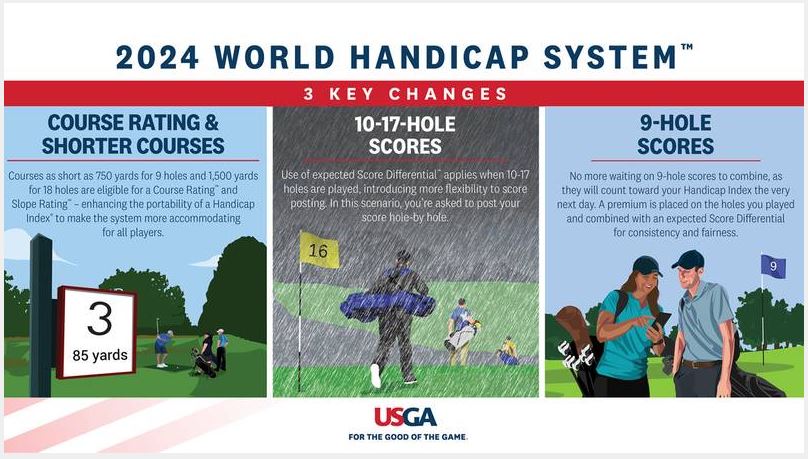Golf Digest’s article on the World Handicap System 2024

· Inclusion of Shorter-Length Golf Courses Within the Course Rating System: The overall length requirements for Course Rating in the WHS will be significantly reduced. A set of tees on an 18-hole course may be as short as 1,500 yards [1,370 meters] to be eligible for a Course Rating and Slope Rating®, and a set of tees on a 9-hole course may be as short as 750 yards [685 meters]. This change is intended to expand the WHS to thousands of shorter length courses, including par-3 courses, and enable more golfers to obtain and use a Handicap Index.
· Use of an Expected Score for a Hole Not Played: Improvements have been made to the method used to handle holes not played, which will now be based on a player’s expected score rather than a score of net par. This new method will produce a 9-hole or 18-hole Score Differential that more accurately reflects a player’s ability. As golfers across the world are playing more 9-hole rounds, an expected score can also be used to convert a 9-hole round into an 18-hole Score Differential. For some countries, this means that 9-hole scores will be considered in the calculation of a player’s Handicap Index immediately after the day of play, rather than waiting to combine with another 9-hole score.
· Playing Conditions Calculation Adjustments Made More Frequent: The Playing Conditions Calculation (PCC) has been modified to increase the likelihood of an adjustment for abnormal playing conditions. National associations were given discretion, beginning in July 2022, to introduce this revision within their computation platforms, which will be complete by April 1, 2024.
· Enhanced Guidance on Conducting a Handicap Review: The role of the Handicap Committee is vital to the success of the WHS and the Rules recommend that a Handicap Review is conducted regularly, or at least once a year to ensure a Handicap Index® remains reflective of a player’s ability. New reporting tools have been developed that national associations can incorporate into their handicapping software to assist Committees in conducting the review process effectively and consistently.


